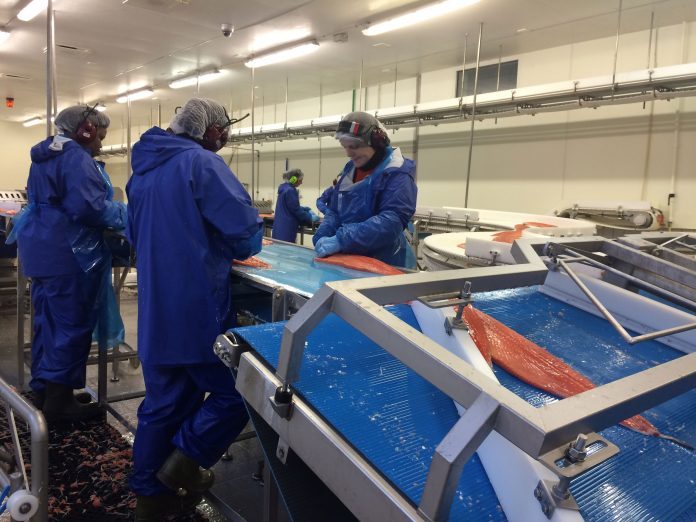This fall’s price hike is put on hold.
“It is a quiet and withdrawn market. A reserved market,” an exporter told Salmonbusiness. “The market is lukewarm, even with modest volumes – according to the conditions.”
This is in line with the last week’s export statistics. The sellers still have a way to go before there is high pressure in the important pre-Christmas trade.
Filled up
We called six different industrial sources, and the calls showed the following price estimates for salmon (FOB farmer) for next week: [factbox]
- 3-4 kilos NOK 47-49
- 4-5 kilos NOK 48-50.50
- 5-6 kilos NOK 49-52
- 6-7 kilos NOK 55-58
“I try predicting those prices, but it takes longer and longer every Friday,” said a trader. “It’s a little down compared to last Friday.That’s because the market is well stocked up.”
This means that the annual seasonal price fluctuation is still on hold.
“So it’s 1-0 to Stale Hoyem for the time being,” he said with reference to today’s SalmonBusiness article “Salmon buyer doubts significant price jump.”
Delayed
He is supported by a purchaser at a processing company.
“Yes, it’s delayed because it seems that some biomass is being pushed,” he said, and added that prices are going “sideways” today.
Others are more pessimistic:
“It’s going to fall a few Norwegian kroner. At 6+ we’ll pay a good deal on Monday and Tuesday packing, but it will fall more towards the end of the week. It is a very difficult market. We must be honest and say that we have talked down the market. We do not have sales for more. For the price to the consumer won’t come down in the next six months. We can not sell more in Europe, and on frozen fish the Chileans are one Norwegian kroner lower than us.”
Cancelled
He does not believe in a juicy price increase before Christmas.
“It is canceled this year. Someone may dare to say that. We sell too little fish. We’re building cold stores in Norway. We have gotten the recoil. Customers too. Customers have built inventory for a long time. Now they have to use their warehousing – and that affects our sales.”











